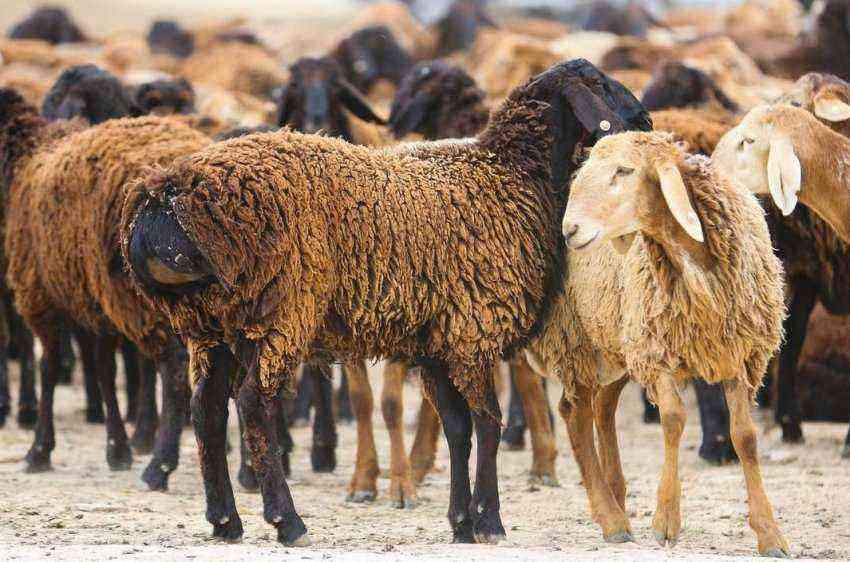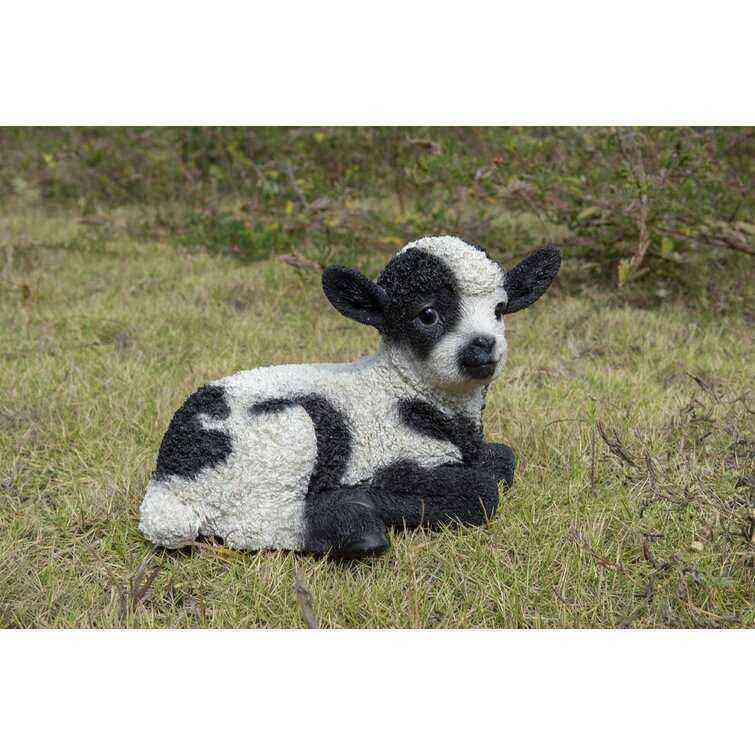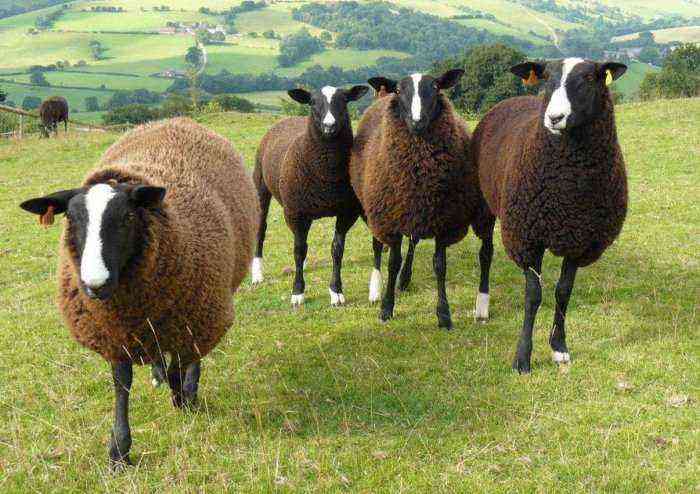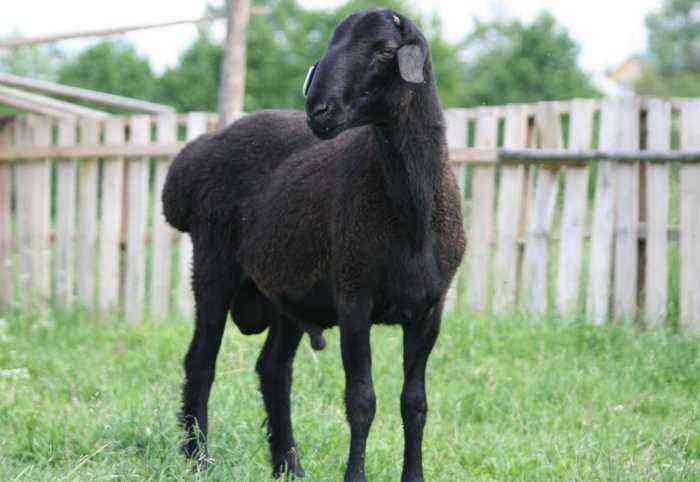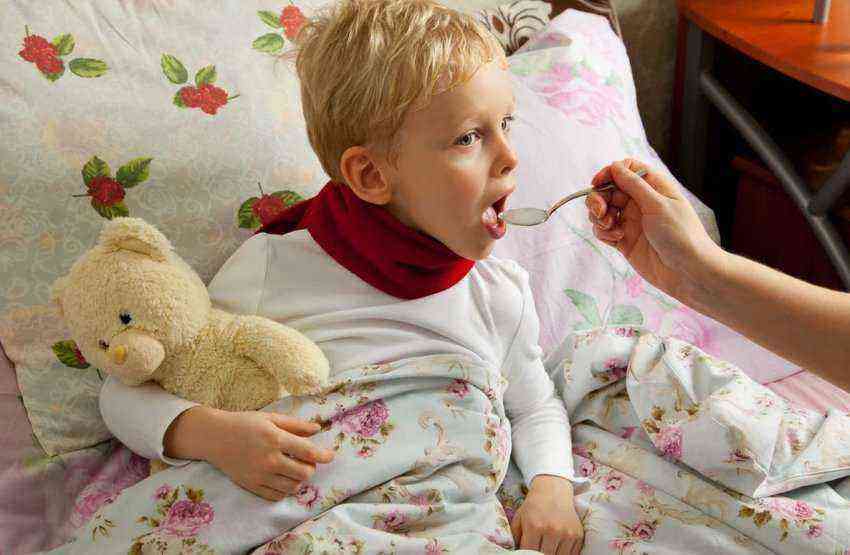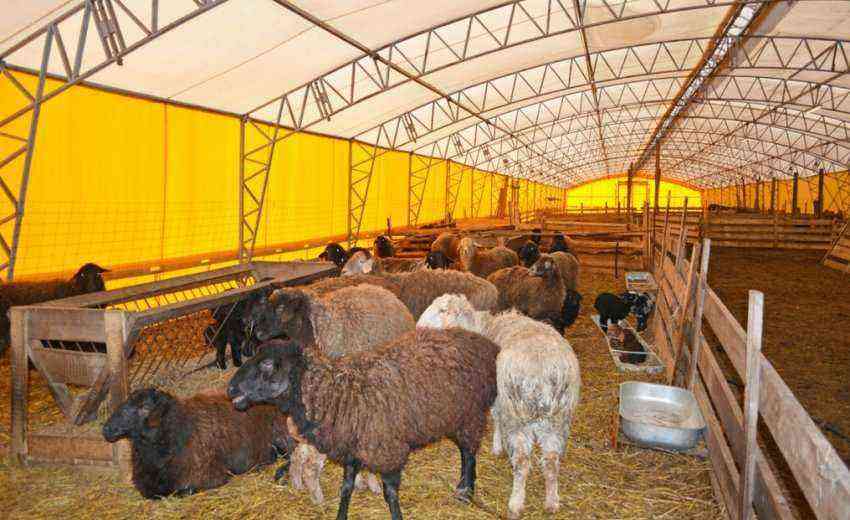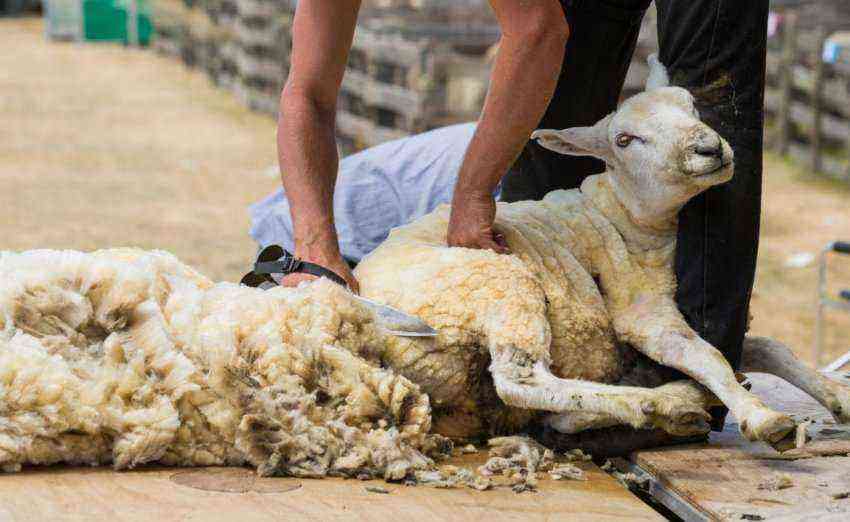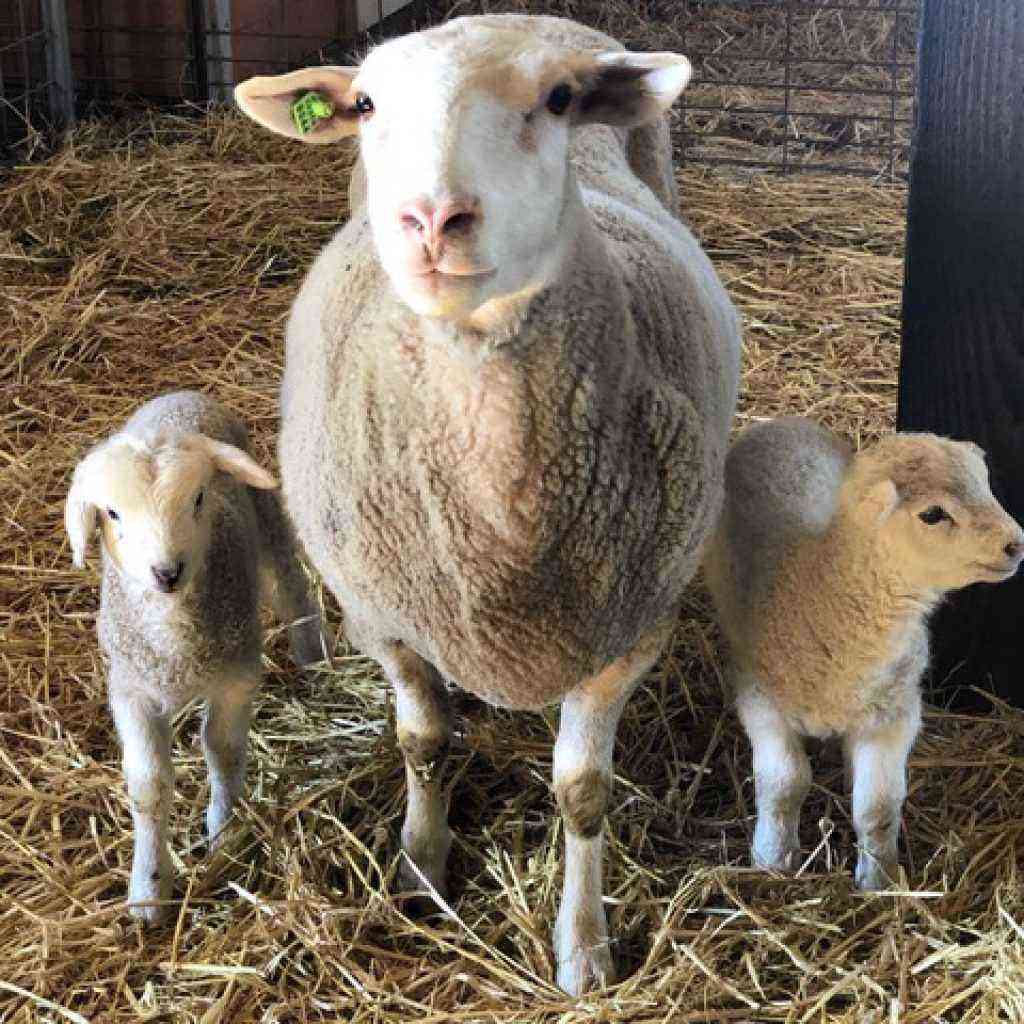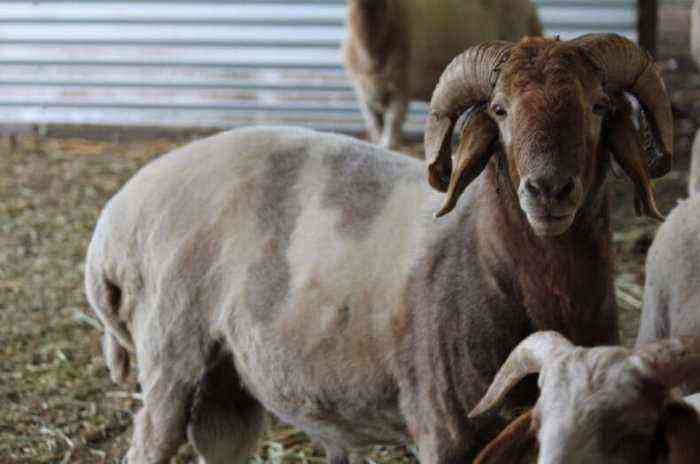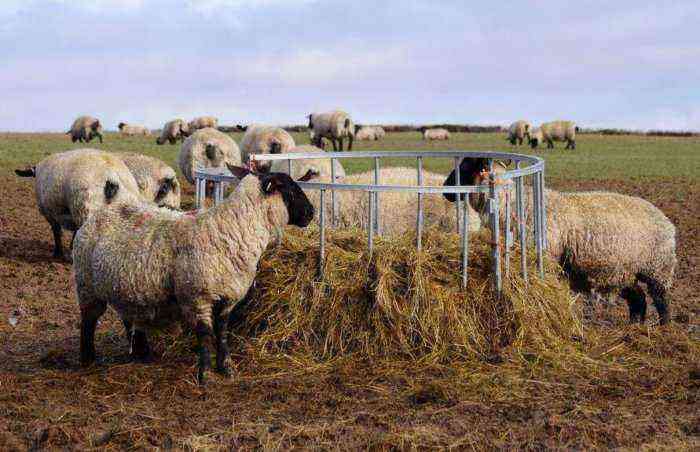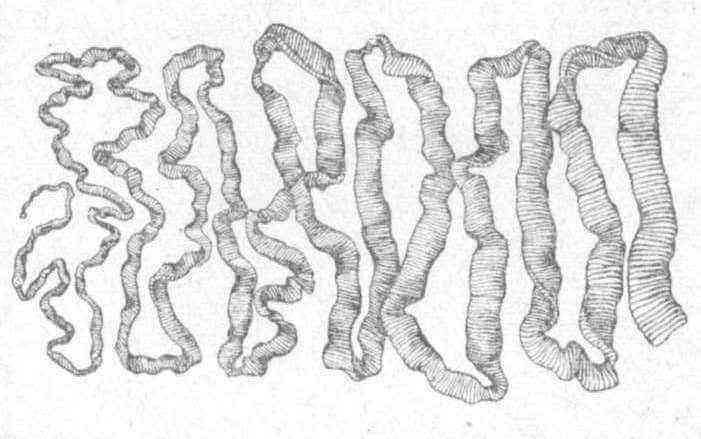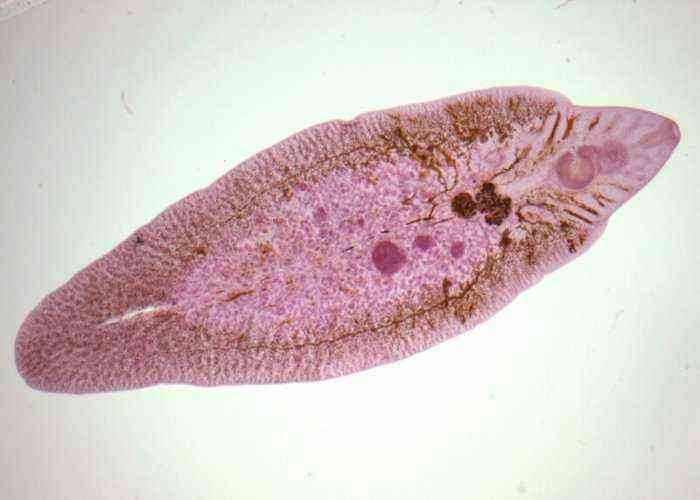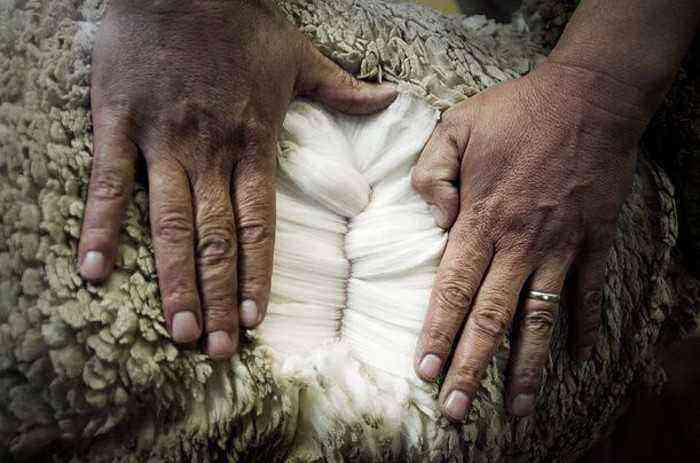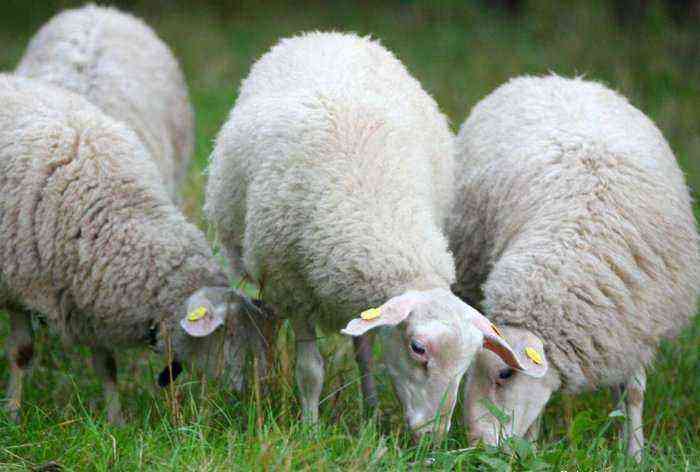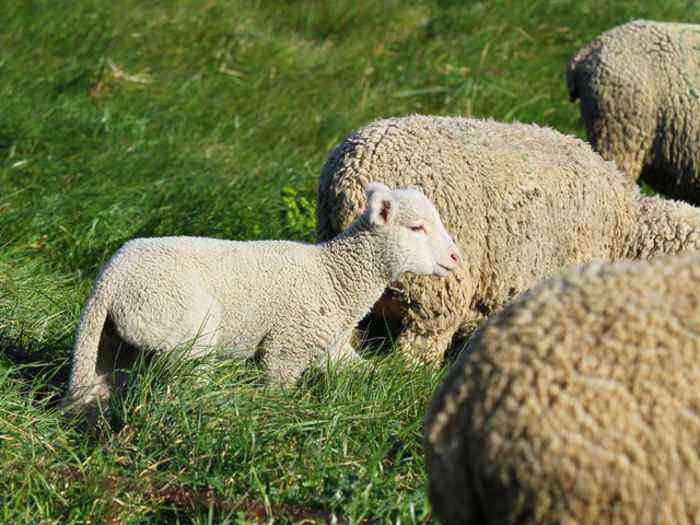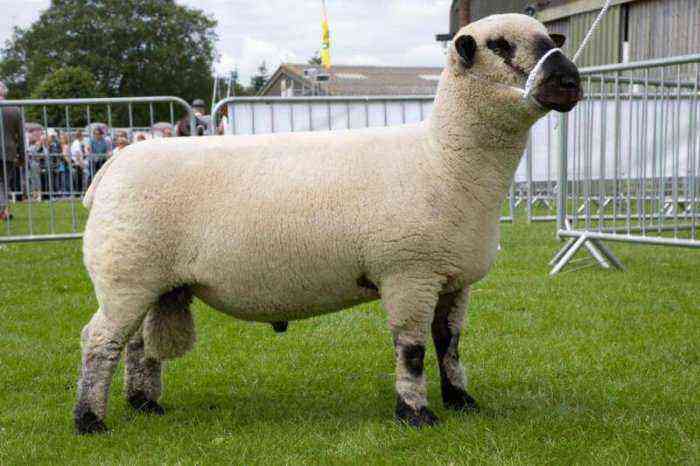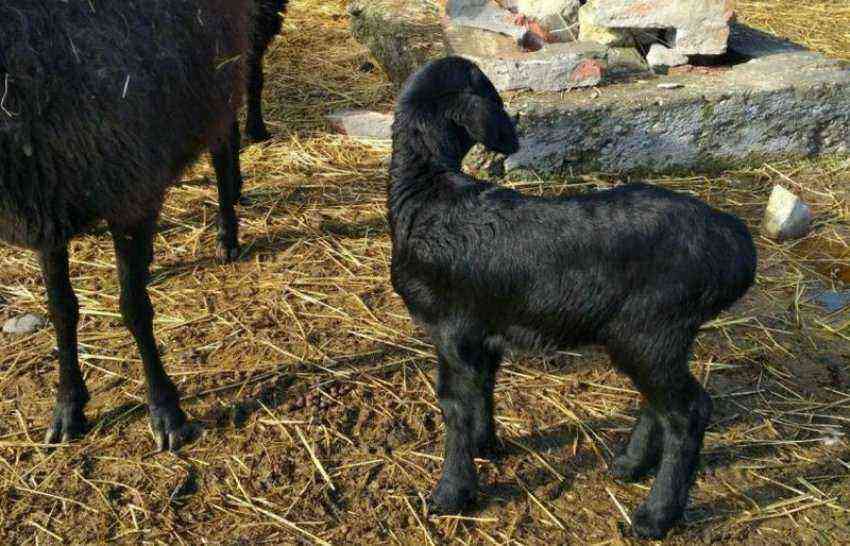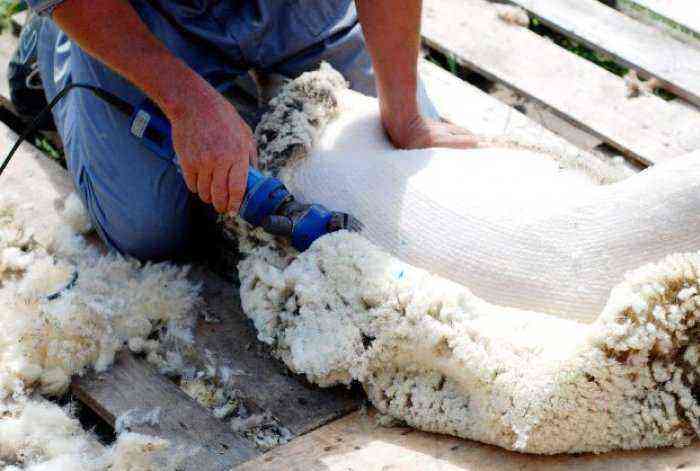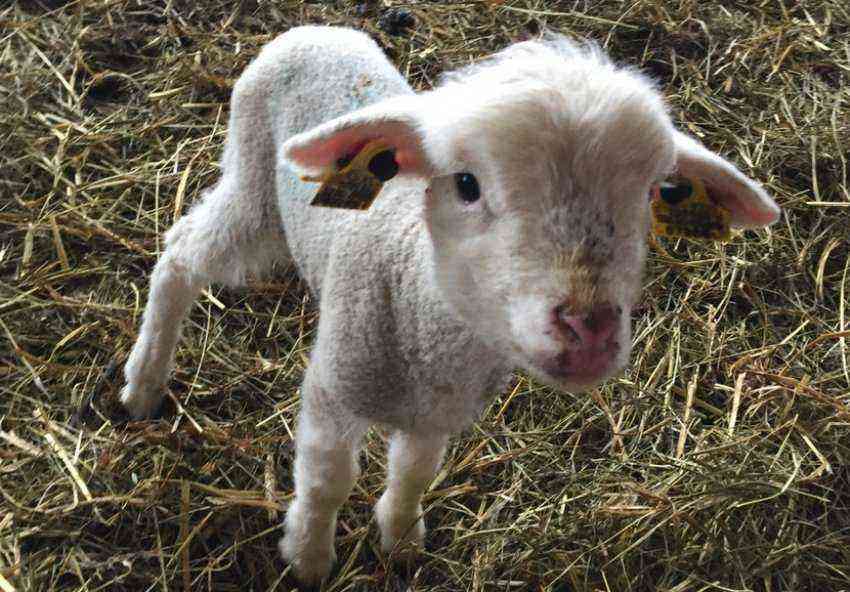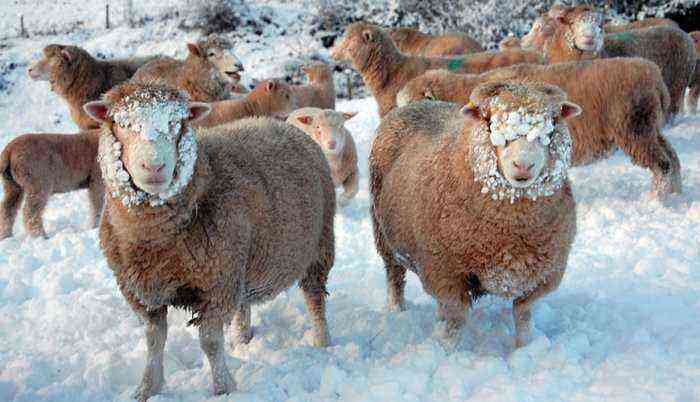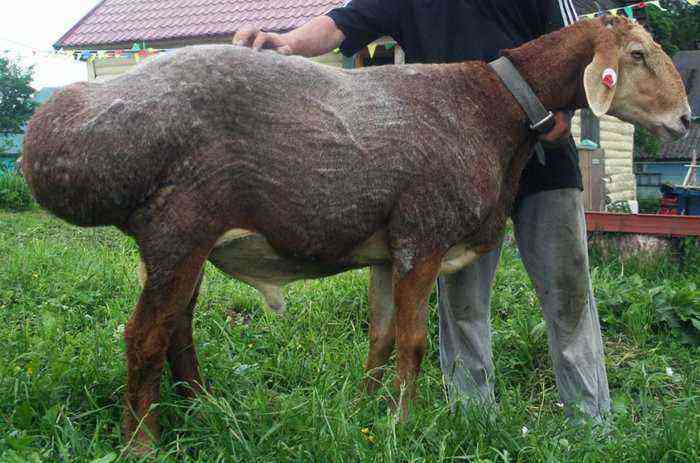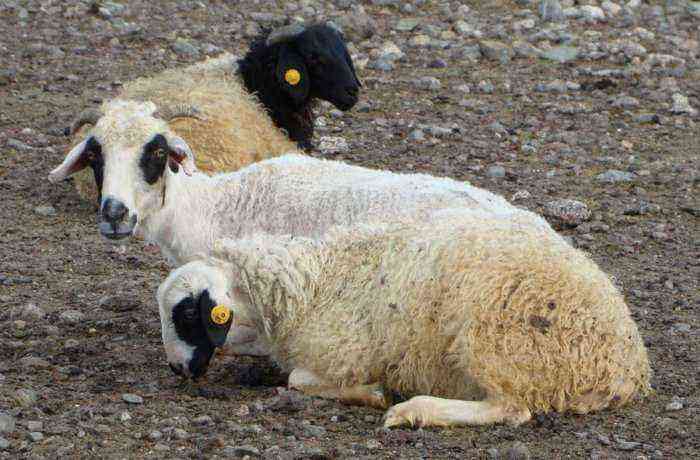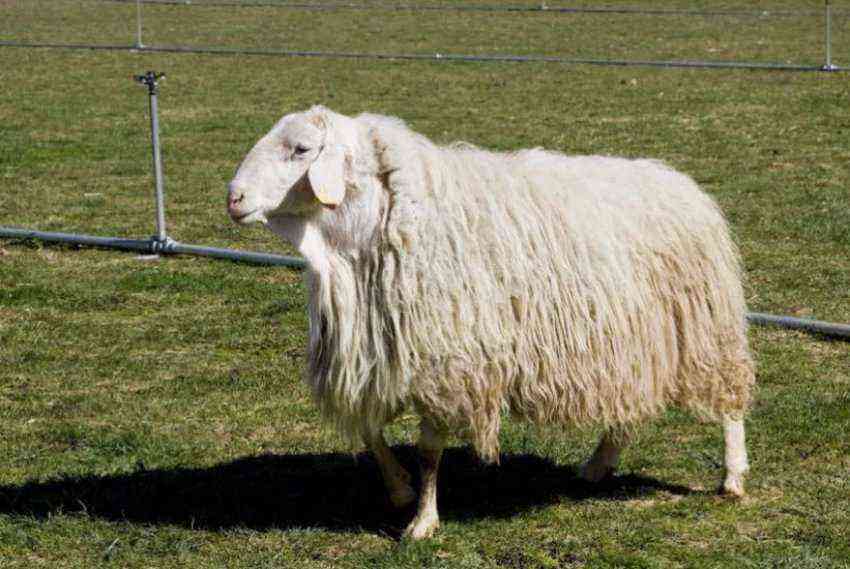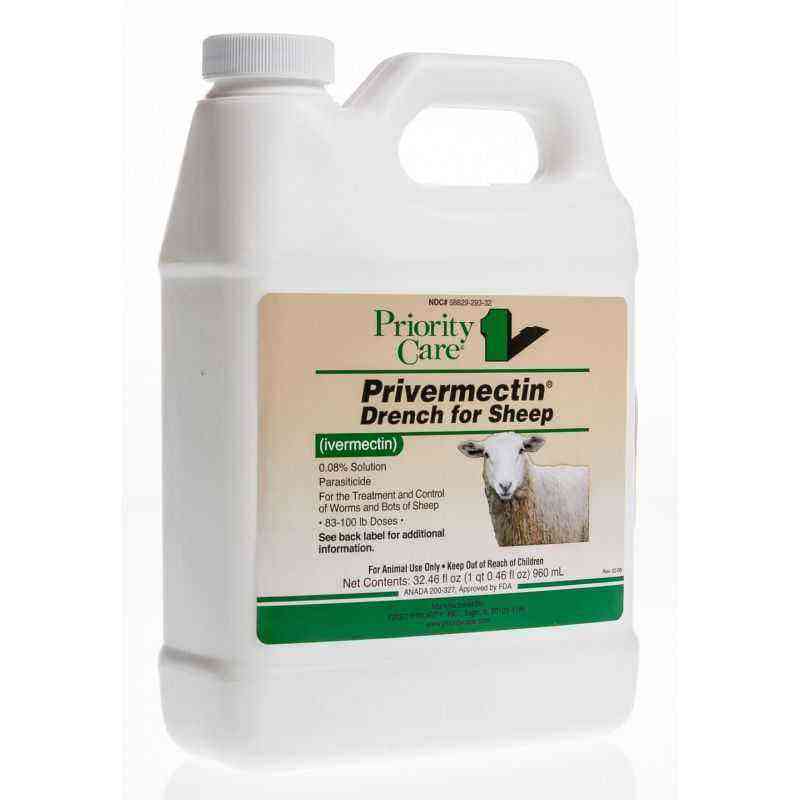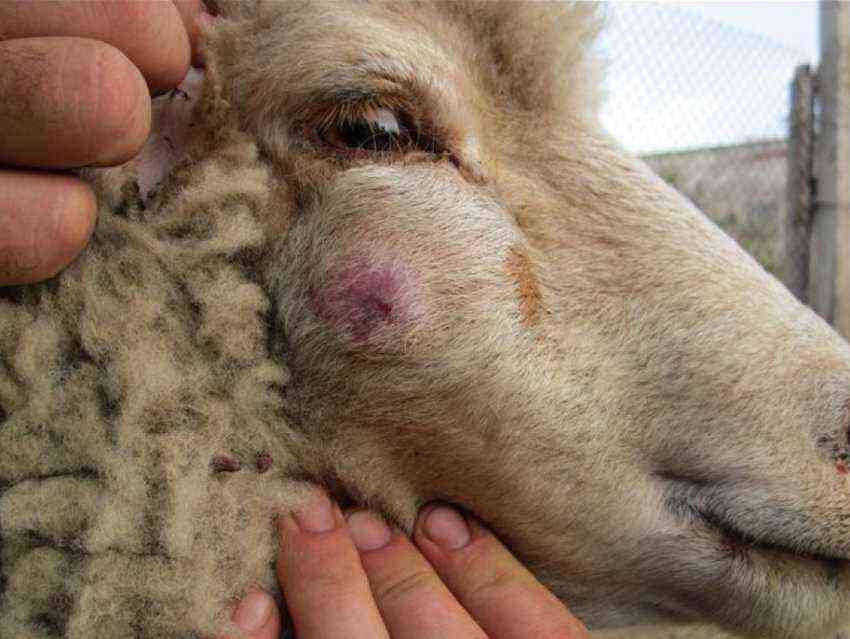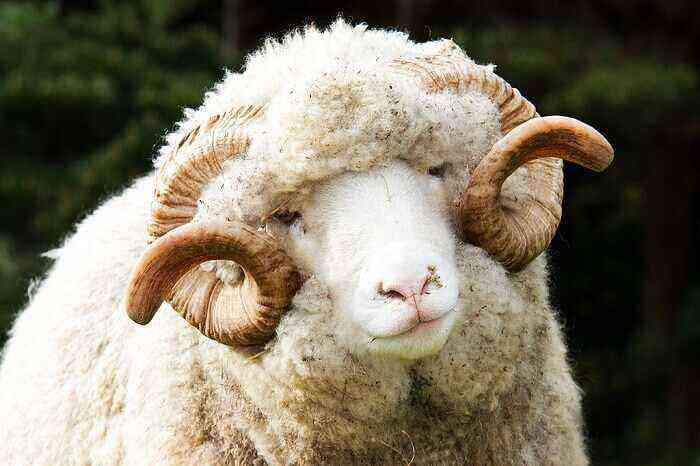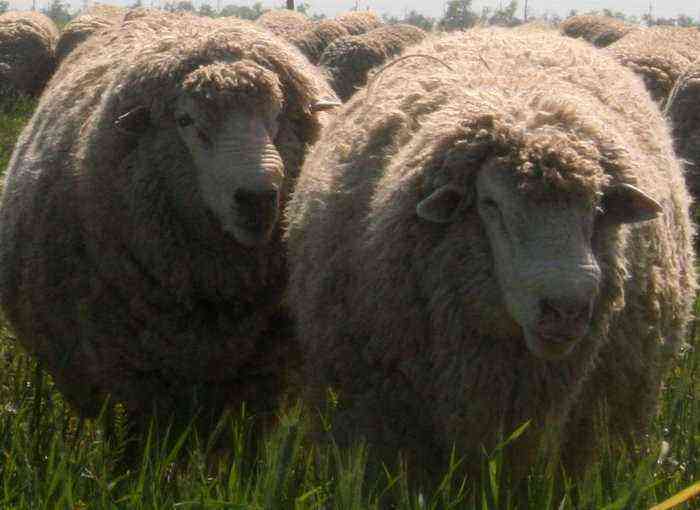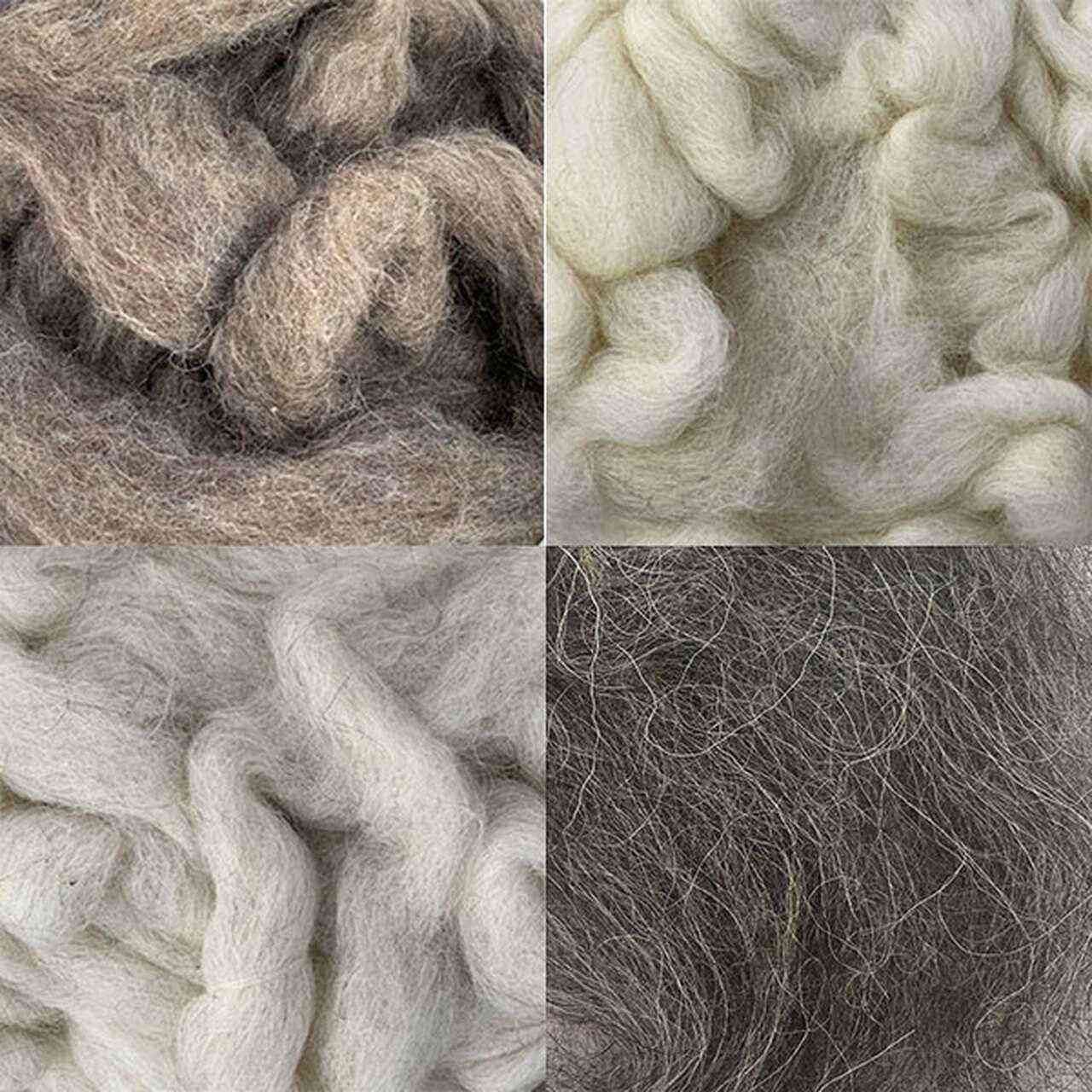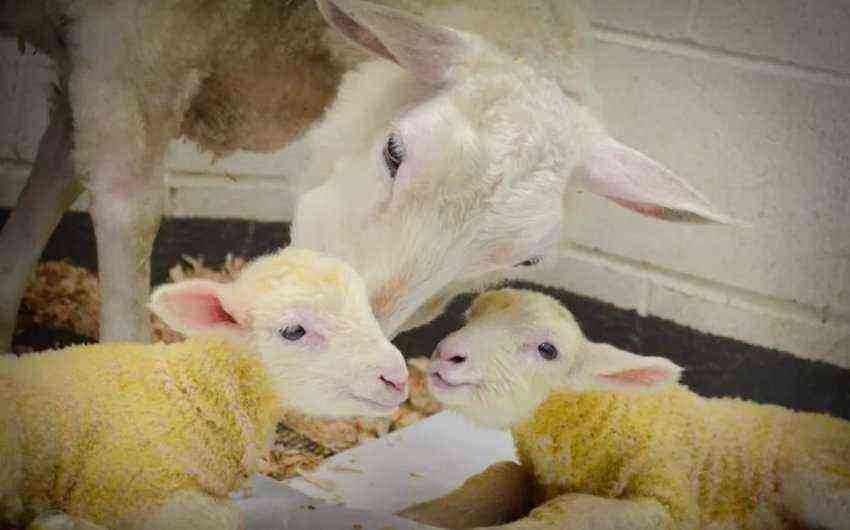Keeping sheep in winter has its own characteristics. The farmer needs to prepare in advance for the transfer of the flock to stall keeping in order to provide the animals with normal conditions and food in the winter. How to do this will be discussed next.
Keeping sheep in winter
Preparing sheep for the winter
How carefully the farmer prepared the sheep for wintering will depend on their state of health. This process includes a number of activities:
- deworming of livestock, prevention of scabies and other diseases;
- arrangement of barns;
- preparing food for the winter period;
- animal feeding.
Animals are transferred to stall keeping within 7-10 days. They do this gradually: first, replacement young animals are brought into the sheepfolds. After 2-3 days, rams and queens are settled in sheepfolds. Castrated individuals are transferred to the stall content last.
Attention! In winter, sheep are taught to a clear daily routine. If this is not done, the animals will become anxious, eat less and lose weight.
Arrangement of the premises
An important step in preparing for winter is the arrangement of the sheepfold. This is a room in which the sheep will be constantly, which means that it must meet certain requirements.
Inside, the temperature is maintained within 8-10 degrees above zero. To reduce heat loss, all cracks must be sealed. However, the windows should not be insulated: the room will have to be ventilated. Particular attention is paid to compartments for queens with lambs. In them, the air temperature is higher than in the rest of the barns. Ideally, if the thermometer here does not fall below 16 degrees. Straw is placed on the floor to keep the sheep warm. It is better not to use sawdust, as they contaminate the wool.
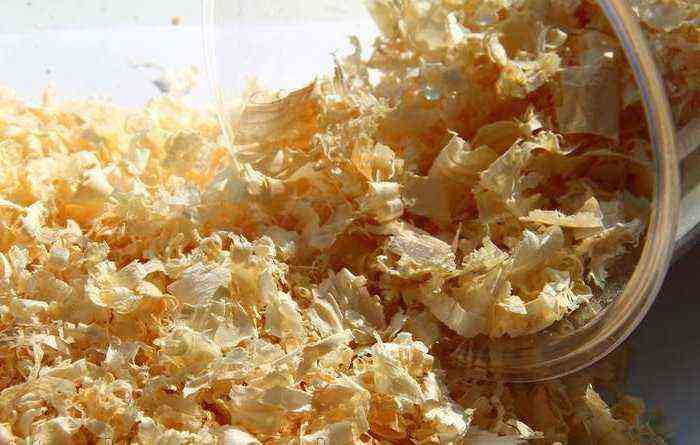
It is better not to use sawdust in the koshara
The sheepfold is equipped with drinkers and feeders based on the needs of the flock. It should be borne in mind that each individual drinks about 7-10 liters of water, based on this, the required number of drinkers and their volume are determined. Feeders are installed not only inside the sheepfold, but also outside, on the street, where the sheep are taken out for a walk. In the fresh air, animals eat willingly.
Attention! To prevent food from freezing in the cold, it is better to fill street feeders with hay, and distribute silage and other similar food inside.
Hygiene in the sheepfold in winter
The inside of the wintering area for sheep is kept clean. Manure is regularly collected, otherwise the air will be saturated with harmful hydrogen sulfide fumes. It is necessary to change the underlying material in a timely manner, because it becomes damp and contaminated with urine. On large farms, harvesting is done mechanically.
Attention! Urea accumulating in the bedding degrades the quality of the fleece.
The territory adjacent to the sheepfold, where the sheep are taken out for a walk, also needs to be cleaned. Most often, bulldozers or other equipment are used to remove manure. The collected manure in the warm season serves as organic fertilizer for garden crops. It is collected in containers, disinfected and infused for 5-6 months. An open-type manure storage should be located at a distance of at least 60 meters from the fence of the walking area.
Diet in winter
With the onset of autumn, sheep need to compile a complete diet, because they do not have access to plant foods. Forage begins to be harvested in the summer. For each adult for the winter period you will need:
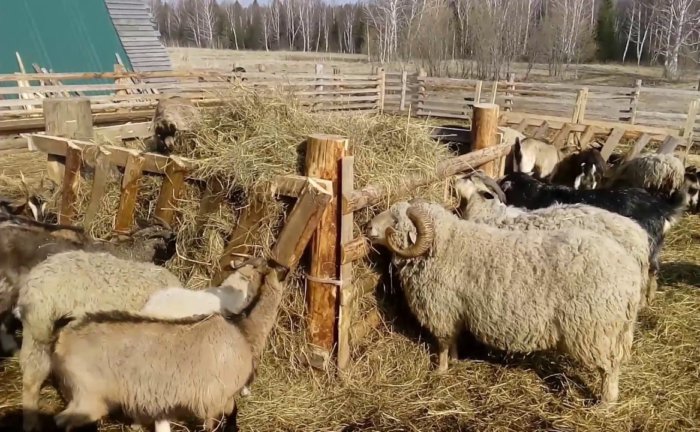
Hay is the main diet of sheep
- hay – 250 kg;
- straw and haylage – 150-200 kg;
- root crops are harvested up to 100 kg per head;
- concentrated feed – 25 kg.
Attention! The amount of forage harvested depends on the age and needs of the animals, as well as on the direction to which the sheep belong.
The sheep diet must include mineral supplements and vitamins. In summer, animals get all the necessary substances by eating grass, but in winter this is not possible. Due to the lack of vitamins and minerals, the immunity of sheep weakens and the quality of the fleece deteriorates. Additives used in sheep breeding are:
- salt;
- bone flour;
- sulfur;
- yeast;
- filucen.
Sheep are fed three times a day in winter. In the mornings, animals are given coarse food, at lunchtime – juicy (silage, root crops), and in the evening they are given concentrated food. With proper nutrition, sheep will not lose weight over the winter.
Attention! When fed with complete mixed feed, sheep do not need mineral and vitamin supplements.
winter care tips
If the farmer does not adhere to a clear regime, caring for the sheep in winter, then the animals experience stress. They are already difficult to tolerate monotony and a change in diet, so special attention should be paid to observing the daily routine. Otherwise, the appetite of pets will worsen, they will begin to lose weight and get sick. This recommendation is especially important to follow in flocks with ewes and pregnant sheep, as stress can harm their health – provoke a miscarriage or reduce milk production.
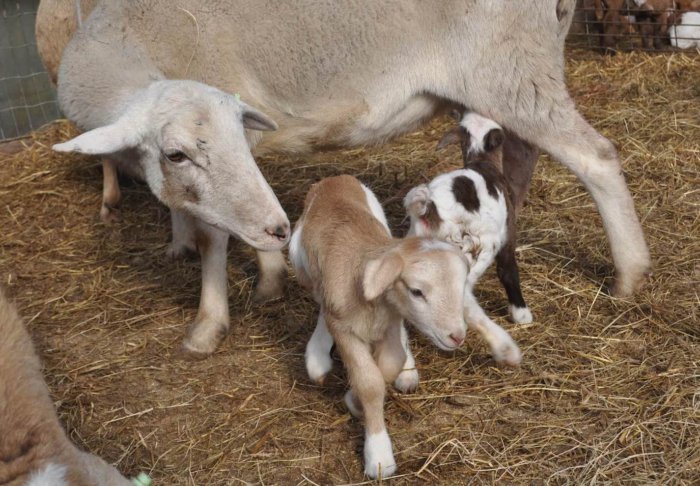
Sheep with lambs
Sheep farmers with experience give the following advice to new farmers:
- regularly conduct a veterinary examination of livestock, check them for the presence of hoof rot and parasites;
- weakened or sick individuals should be isolated from the rest and treated;
- clean hooves once every 6 weeks;
- vaccinate in a timely manner, adhering to the schedule;
- store food in a dry place with good ventilation, protect them from rodents;
- filling the feeder, first disperse the sheep so as not to stain their wool;
- sheep should be sent to the watering place in small groups, making sure that one individual has 25 cm of trough length;
- it is better to use heated drinking bowls, and if there are none, then the sheep are fed with water from a well, its temperature is slightly higher than in reservoirs.
Transferring sheep to a stall requires good preparation. The farmer must prepare the forage base in advance and take care of its safety throughout the winter. Attention is also paid to the arrangement of the premises for sheep: it is insulated, if necessary, equipped with ventilation, fluorescent lamps. Before transferring the flock to the stall, it is important to complete veterinary and preventive measures.
